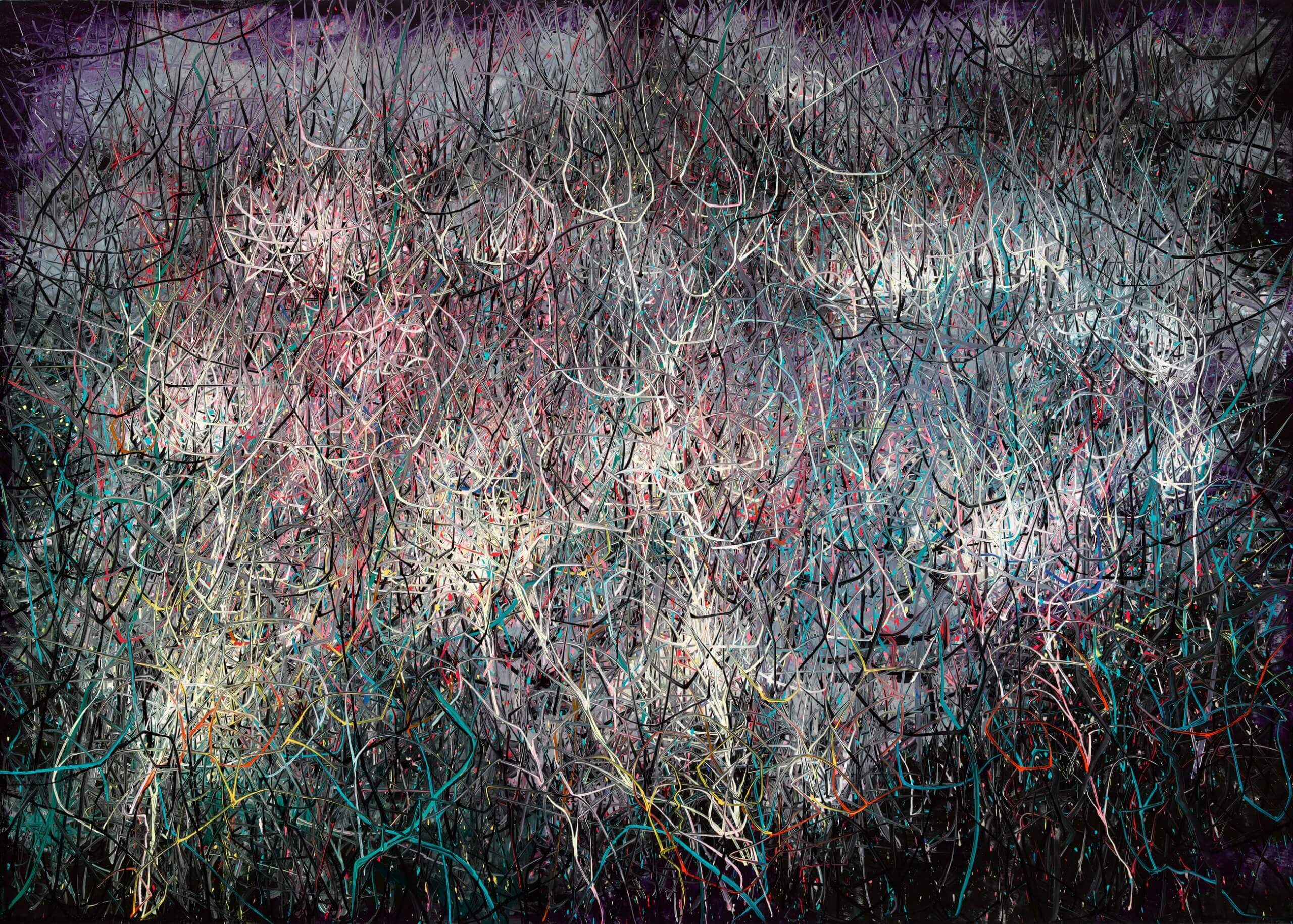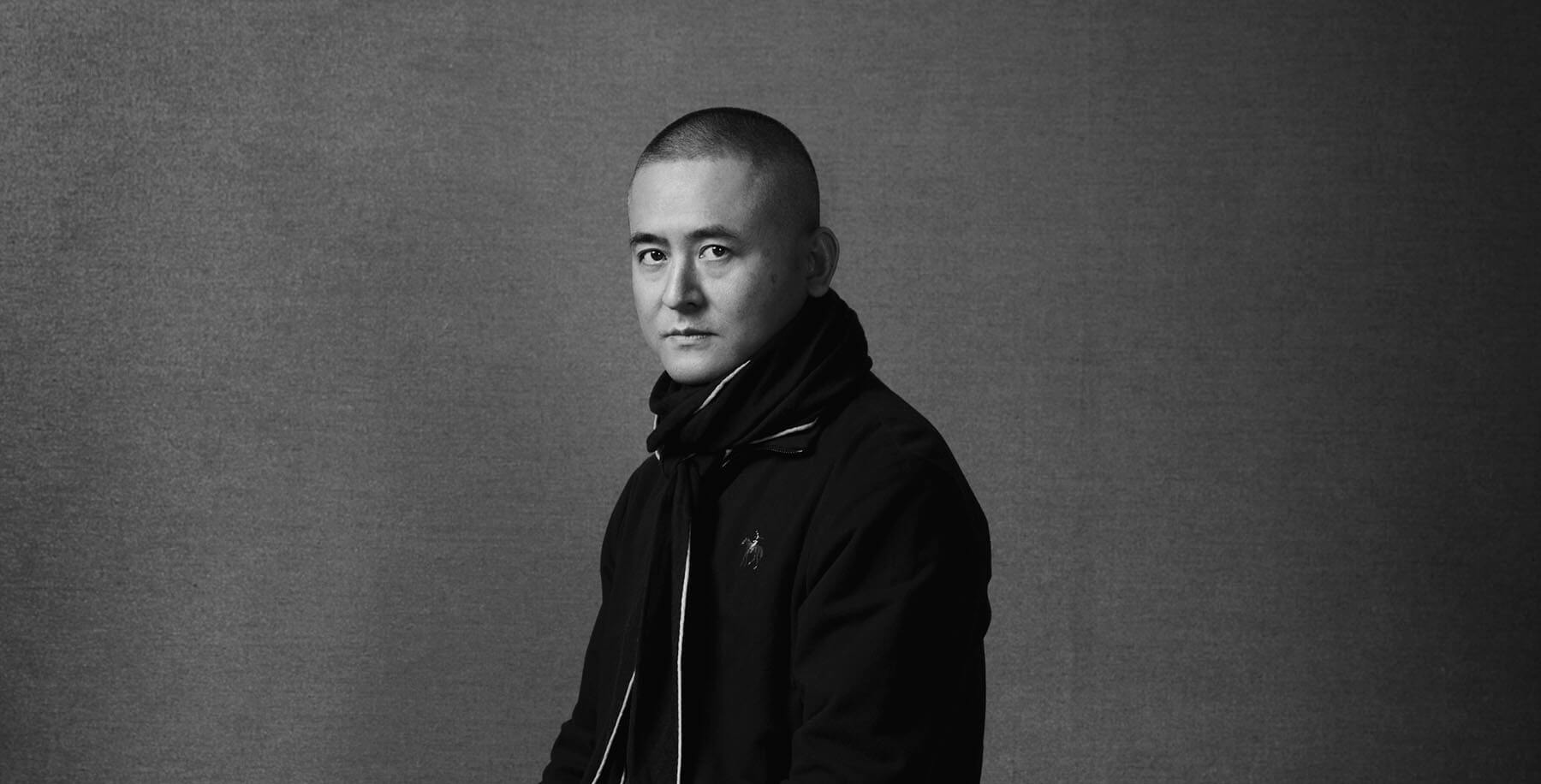
Zeng Fanzhi
Untitled
Untitled
2018 Oil on canvas 250.1 x 350.2 x 6.7 cm / 98 1/2 x 137 7/8 x 2 5/8 in

Zeng Fanzhi
Zeng Fanzhi was born in Wuhan, China in 1964 and graduated from the Hubei Institute of Fine Arts in Wuhan in 1991. One of the most celebrated artists working today, Zeng is lauded across the globe for his technical mastery and ability to conjure emotion from his subject matter.
Untitled
An artist of constantly evolving style and subject matter, Zeng Fanzhi has created a series of 'Untitled' works that herald a new level of engagement with abstraction and a progression from his 'This Land So Rich In Beauty' series. Here, Zeng's signature dark and contorted tree branches, vines and scraggy grasses have evolved into thin, energetic brushstrokes and taken the forefront as dominant rather than decorative elements. Breaking first from the popular Cynical Realism style of his Mask series, and then from representation altogether, Zeng's recent work represents a turn to introspection and deeper contemplation on the intersection of Western art and philosophy with Chinese traditional styles and subject matter.
Pure threads of blue and red pigment traverse 'Untitled' (2018), weaving through a thicket of dense black and white marks to form a gauzy, convoluted mass. The slight incursion of yellow at the lower left provides a subtle temperature shift to create optical depth. In keeping with Zeng's more literal depictions of landscapes, a horizon line is present in the form of a vaporous purple and grey horizontal at the work's upper edge. Directing the eye downwards, it suggests a nocturnal view of a reflective pool of water with a ghostly mirrored image, drawing a visual parallel to the darker and more abstracted of Monet's water lily paintings, such as 'Water Lilies, Setting Sun' (1907). Zeng's fascination with the Impressionists was a fixture from the start of his artistic career; at age seventeen, the painter undertook a three-day voyage down the Yangtze river without food or money in order to see an exhibition of French painting in Shanghai. [1] Like so many of his peers raised after the Cultural Revolution, Zeng has sought a dialogue in his work between Chinese literati tradition, Revolutionary realism and modern Western culture through a marriage of diverse technical and philosophical approaches. The artist has stated the importance of Impressionist colour theory in his work, and relies heavily on the principle of mélange optique, or 'optical mixing', in which colours react with one another as they are simultaneously perceived by the eye, rather than being mixed into a single hue on the palette. The immense energy of Zeng's marks is the result of an unusual and highly frenetic painting process: the works are painted wet-on-wet, which allows each layer to disrupt those still wet beneath it. Holding two paintbrushes at once, one between the thumb, index and middle fingers, and the other between the middle and ring fingers, he is able to create twin marks that are directed yet not fully controlled. Zeng's decision to deliberately undermine his control of the final image through a process that distances the artist's touch has left him with a highly physical and active surface that radiates energy and remains suggestive and enigmatic.
[1] Henry Périer, 'The Art of Masking and Revelation' in 'Zeng Fanzhi', Paris/FR: Paris-Musées, 2013, p. 183.
